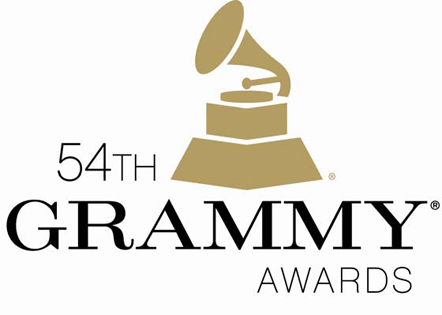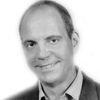AC Newman "Hey, That's No Way To Say Goodbye"
To celebrate Leonard Cohen's legendary 40+ years in music and his upcoming new album Old Ideas, a handful of today's artists have recorded a cover of their favorite Leonard Cohen song for Old Ideas With New Friends. Featuring artists such as Cold War Kids, Deerhunter's Bradford Cox, Cults, and more, Old Ideas With New Friends takes a fond look at the 77-year-old poet and songwriter's illustrious career and the impact he continues to make on popular culture.

A Conversation with Grammy Co-Broadcast Music Mixer, John Harris
Mike Ragogna: John, you oversee all of the audio for the Grammys this year.
John Harris: Well, I'm half of a team. Eric Schilling and I are the mixers.
MR: With a production this large, what are the most challenging elements of coming up with the perfect mix for the show?
JH: You know, it's not thinking about it being for something as big or multi-faceted as it is. It's just mixing for you and your artists and whoever is with you. I think years ago when I did this, I would really be worried about how many people were listening to it. You just go back to the music and you go back to just listening and mixing the song and getting into the performance they're doing. Alot of times, you have to not think about the record that you've heard all year because they're not doing that. They're playing that song, but now they're playing on this show. They've come out to be honored by performing and they're doing another version of their song. So don't get all hung up in what they did, get into what they're doing now.
MR: So, you have a lot of elements going into the mix. When you're having to balance all of these elements, how daunting is that? You've done this for quite a while, so obviously, it's not as daunting as it once might have been, but it still has to be amazing.
JH: It's got to be your best game, yeah.
MR: What are the most challenging elements that go into the mix?
JH: I think, to be consistent, to have such a disparate grouping of acts, but to make a consistent sounding show--to have the Foo Fighters, a big rock band, something delicate, an r&b act--to have all of these different artists and styles, the challenge is to somewhere in your head make something consistent. Make it flow and be a show, not a show of very different sounding performances, but how those performances are going to sound.
MR: Relative to one another.
JH: Relative to one another.
MR: There are a few engineers here representing their artists, such as Geoff Emerick for Paul McCartney or Bob Clearmountain for Bruce Springsteen. Is there ever a situation where you're trying to make a coherent show and some of the producers come in and want a certain mix move that they'd like for their artists, but it won't gel with the show? And how do you handle such a thing?
JH:Well, I don't really have that so much. But you have fellows like Geoff or Bob who come in and they bring you back to THIS particular artist. You just had another very prominent artist a couple hours ago, they bring your thoughts back to theirs, the one they're concerned about. And with all of those guys, they'll bring me back to the relationship I have with them. If I was just here by myself and nobody ever came in here, we wouldn't make as good a show without that input and that enthusiasm and that dedication. You know, Bob is Bob, he's here today representing Bruce. But I will go and be Bob representing someone else at a show like this. That's why artists need that guy, not necessarily because I want you to make this brighter or louder, they bring your focus to the feel, the soul of their artist, and make you understand it better.
MR: When you're looking at the show, you're having all of the visuals that are also coming in, all of the special effects, the announcers, and pre-records. So, all of this stuff and more comes into the mix. But you have audio "snapshots" that are taken from rehearsals that are used as a backup. By the time you're bringing in all of the parts of the final mix, do you use these snapshots to guide you at all?
JH: Well, no, not really. You don't rely on them wholly. You know, Geoff and I just recorded Paul, then we went next door and we listened to it, we did solo things and listened. "Okay, this fits here, and this fits here." At the end of the day, I'm confident in that, but I'm still going to have my hands right on Paul, right on the bass, right on things, ready to move because if they walk out there and, you know, all of the sudden they turn the bass all the way up, I'm going to have to react. So, no, the feel will still be there, I think. Most people, even in rehearsals at this show, are pretty passionate and they're giving it quite a bit. They don't phone it in. Nobody phones anything in here. I think the most important thing it does is give the artist the confidence that they have when they leave here. We really dig into it and make this thing as best it can be. So, at that moment in time, we're as prepared as we can be. What happens when we go to air? Well, we're hoping it's pretty much similar.
MR: Are there new technologies that are being relied on more this year than any of the previous Grammy years.
JH: Well, no, not so much. We've built this way of doing this over time and we're hesitant to change it in any big ways. But, having said that, a few years ago, we did Foo Fighters in that same position down the block, but because of technology being what it was then, we had another audio truck and another video truck down there. Now, we're connecting to them via fiber through this complex. It comes in downstairs and it will come in up to here, just as if it were in Staples.
The cool thing is connectivity. I just did a show at the Tony Awards in New York where they were at The Beacon and the orchestra and we were on 25th Street, sixty blocks away, piping, but we could see them and we had cues. There's a "cue orchestra." We played, we fed it up there, it came up in the main desk, and so, connectivity, I think, and that kind of technology, not necessarily audio stuff. I'm hesitant to change the audio, so there's nothing hugely different this year. You know, we started with a digital desk in the mid-'90s. That was a big thing, it was huge. But now this works, so we're going to keep doing this.
Transcribed by Brian O'Neal
